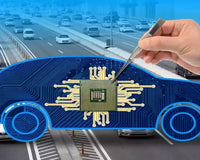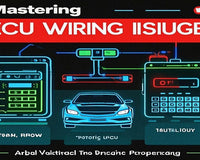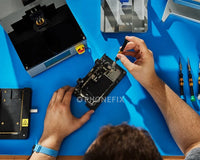Automotive powertrain is essentially the heart of the vehicle, encompassing the engine, transmission, drive shafts, differentials, and other components that work together to generate power and transfer it to the wheels, enabling the car to move. Any malfunction within these components can lead to performance issues, reduced fuel efficiency, or even complete breakdowns. Diagnosing and repairing an automotive powertrain is a complex but crucial process.
The first step in powertrain repair is accurate diagnosis. Modern vehicles are equipped with sophisticated onboard diagnostic systems (OBD-II). Mechanics use FNIRSI FD10 diagnostic scanners to read the trouble codes stored in the vehicle's computer. These codes provide valuable clues about potential problems, such as engine misfires, transmission sensor failures, or issues with the fuel injection system.
However, for more in-depth analysis, a professional ECU programmer such as the KT200 Plus Programmer is required. KT200 Plus programmer can communicate with the vehicle's engine control unit (ECU) and other control modules. It allows technicians to access detailed data, adjust parameters, and even reprogram the ECU if necessary. For example, if the ECU has been affected by a software glitch or needs to be updated to improve performance, the car programmer can carry out the task accurately.
On the other hand, Car repair chips, are designed to address specific malfunctioning components or systems within the powertrain. They can act as a replacement or supplementary solution for faulty sensors or control modules. For instance, if a transmission control module has a minor defect, a car repair chip might be able to override or correct the issue, saving the cost and time of replacing the entire module.
Once the problem has been identified through diagnosis, it's time to inspect the relevant powertrain components. Mechanics will visually check for signs of wear, leaks, or damage in parts like the engine, transmission, belts, and hoses. For the engine, they might perform tests such as a compression test to check the health of the cylinders. In the case of the transmission, fluid analysis can reveal if there are metal shavings or other contaminants, indicating internal wear.
After the repair, it's essential to re-calibrate the powertrain systems. KTprog ECU programmer prove invaluable. They can reset and adjust the ECU and other control modules to ensure that they are working in harmony with the repaired or replaced components. Once the re-calibration is complete, the vehicle undergoes a series of tests, including test drives, to confirm that the powertrain is functioning properly.
Diagnosing and repairing an automotive powertrain requires a combination of technical expertise, advanced diagnostic tools and innovative solutions. By understanding the role each of these elements plays, mechanics can provide more efficient and accurate repairs, keeping your vehicle on the road and running at its best.
The Ultimate Guide to Diagnosing And Repair Car Powertrain Issues










